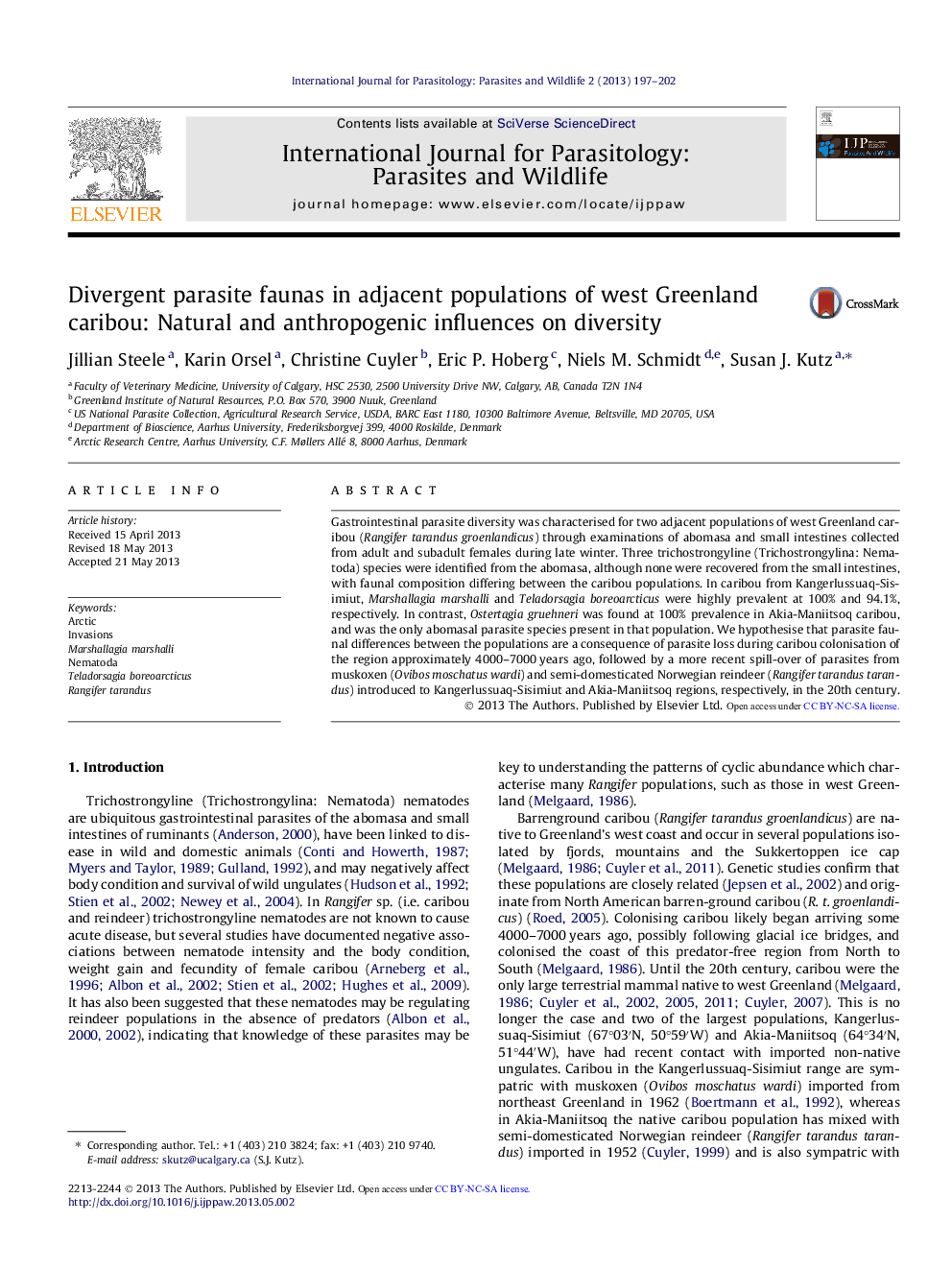| Article ID | Journal | Published Year | Pages | File Type |
|---|---|---|---|---|
| 2055294 | International Journal for Parasitology: Parasites and Wildlife | 2013 | 6 Pages |
•We described gastrointestinal nematodes for two caribou populations in Greenland.•Abomasa and small intestines from female caribou were examined.•Nematodes collected were morphologically identified to species.•Abomasal diversity differed between populations and reflected historical processes.•Parasite faunas appear structured by species loss and recent host translocations.
Gastrointestinal parasite diversity was characterised for two adjacent populations of west Greenland caribou (Rangifer tarandus groenlandicus) through examinations of abomasa and small intestines collected from adult and subadult females during late winter. Three trichostrongyline (Trichostrongylina: Nematoda) species were identified from the abomasa, although none were recovered from the small intestines, with faunal composition differing between the caribou populations. In caribou from Kangerlussuaq-Sisimiut, Marshallagia marshalli and Teladorsagia boreoarcticus were highly prevalent at 100% and 94.1%, respectively. In contrast, Ostertagia gruehneri was found at 100% prevalence in Akia-Maniitsoq caribou, and was the only abomasal parasite species present in that population. We hypothesise that parasite faunal differences between the populations are a consequence of parasite loss during caribou colonisation of the region approximately 4000–7000 years ago, followed by a more recent spill-over of parasites from muskoxen (Ovibos moschatus wardi) and semi-domesticated Norwegian reindeer (Rangifer tarandus tarandus) introduced to Kangerlussuaq-Sisimiut and Akia-Maniitsoq regions, respectively, in the 20th century.
Graphical abstractFigure optionsDownload full-size imageDownload as PowerPoint slide
